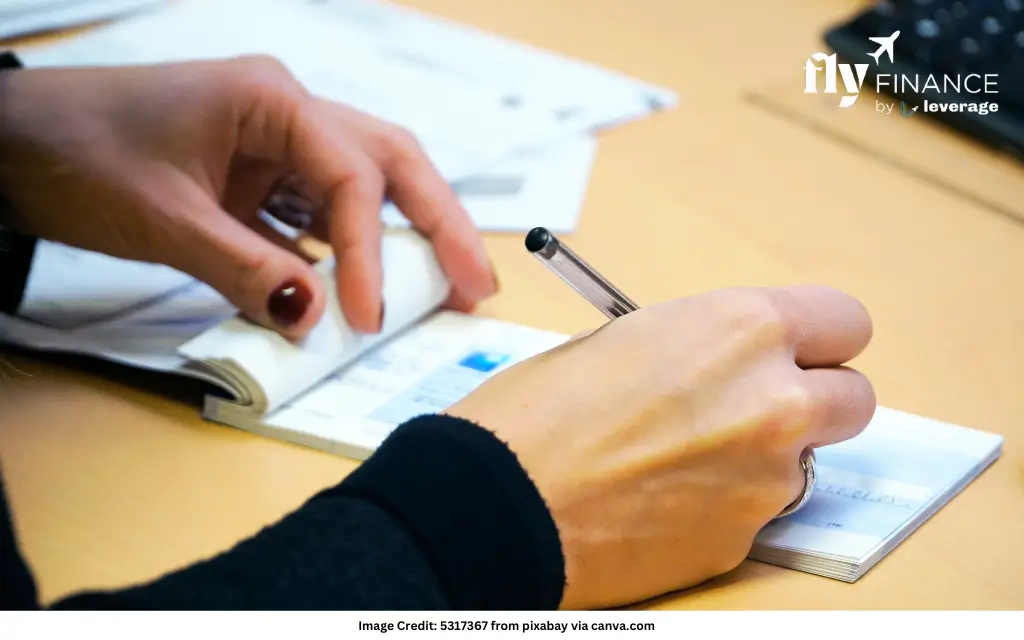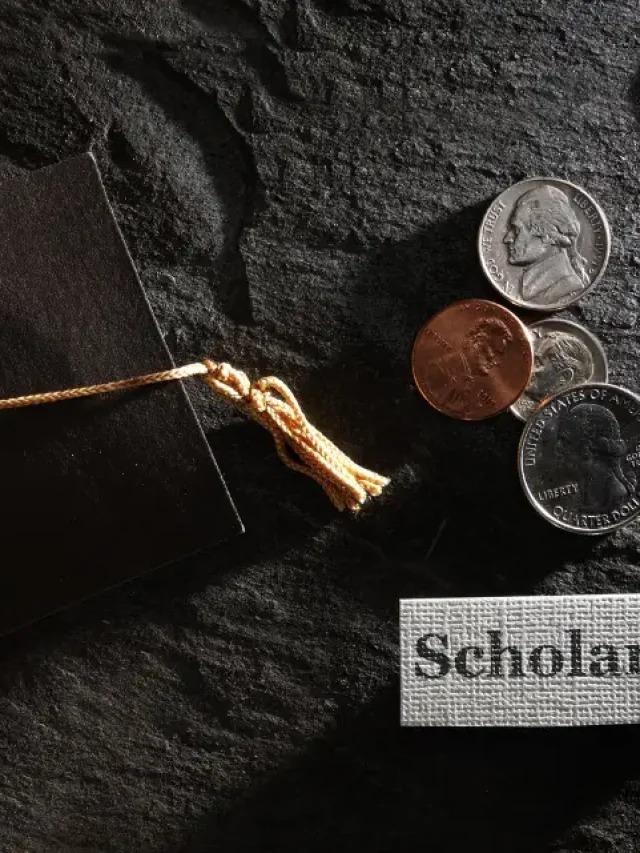Handling financial transactions confidently is a valuable skill in today’s fast-paced world. One common task is depositing a cheque into a bank account, which ensures you receive funds securely and efficiently. But how to deposit cheque in bank?
Whether it’s your first time or you just need a refresher, this guide clearly explains how to deposit cheque in bank using online, ATM, drop box, and mobile methods—covering every step to help you navigate the process with ease.
This Blog Includes:
What Is a Cheque and Why Deposit It?
A cheque is a written instruction to a bank to pay a specified amount to the person or entity named on it. Depositing a cheque transfers the funds into your bank account, making them available for your use. Understanding the process of depositing cheque in bank is essential for managing payments, such as salaries, refunds, or gifts, received via cheque.
Key Benefits of Depositing a Cheque in a bank:
- Ensures secure transfer of funds to your account.
- Provides a record of the transaction for future reference.
- Allows access to funds once the cheque clears, typically within a few days.
Also Read: SBI Education Loan Processing Time: Check Approval and Verification Time
Steps to Take Before Depositing a Cheque
Before heading to the bank, take a few moments to prepare. Proper preparation ensures a smooth deposit process and prevents delays or errors. This section outlines the steps to get ready for depositing your cheque.
Verify Cheque Details
Start by checking the cheque for accuracy. Errors in the details can lead to rejection or delays in processing.
Details to Confirm:
- The cheque is addressed to you (check the payee name).
- The amount in words matches the amount in numbers.
- The cheque is signed by the issuer.
- The date is valid (most banks accept cheques dated within six months).
Endorse the Cheque
Endorsing a cheque involves signing the back to authorize the deposit. This simple step confirms you are the rightful recipient.
How to Endorse:
- Flip the cheque over to the back.
- Sign your name exactly as it appears on the front (payee name).
- If depositing to a specific account, write your account number below the signature (optional, depending on bank rules).
Gather Required Documents
Banks may ask for identification to verify your identity, especially for larger amounts or if you’re depositing at a new branch.
Common documents needed to deposit cheque in bank:
- Government-issued ID (e.g., Aadhaar card, PAN card, driver’s license or any KYC documents).
- Your bank passbook or account details for reference.
- The cheque itself, properly endorsed.
Methods to Deposit a Cheque in Bank
Banks offer multiple ways to deposit a cheque—such as branch deposit, ATM deposit, drop box deposit, or online methods—allowing you to choose the most convenient option. Each method has its own process, and understanding them helps you pick the right one based on your needs. Below are the most common methods available.
How to Deposit Cheque in Bank via Branch
Visiting a bank branch is a traditional and reliable way to deposit a cheque. This method suits those who prefer face-to-face assistance or need immediate confirmation.
Steps to Deposit at a Branch:
- Visit your bank’s nearest branch during working hours.
- Fill out a deposit slip with your account details, cheque amount, and date.
- Submit the cheque and deposit slip to the bank teller.
- Collect the receipt or acknowledgment for your records.
| Field on Deposit Slip | Details to Enter |
| Account Number | Your bank account number. |
| Name | Your full name as per bank records. |
| Cheque Amount | Amount written on the cheque. |
| Cheque Number | Number printed on the cheque. |
| Date | Date of deposit. |
How to Deposit Cheque in Bank Using ATM
Many banks provide cheque deposit facilities at ATMs, offering a quick and convenient option, especially outside banking hours.
Steps to Deposit via ATM:
- Locate an ATM of your bank with a cheque deposit feature.
- Insert your debit card and enter your PIN.
- Select the “Cheque Deposit” option on the screen.
- Insert the endorsed cheque into the designated slot.
- Confirm the amount displayed on the screen and collect the receipt.
How to Deposit Cheque in Bank Using a Drop Box
For added convenience, many banks offer drop boxes at their branches, CDMs or ATMs, allowing you to deposit a cheque even after regular banking hours. This method is perfect if you can’t visit during the day. To ensure a smooth transaction, prepare the cheque properly before placing it in the drop box.
Steps to Deposit via Drop Box:
- Endorse the cheque by signing the back and including your account number if required.
- Fill out a deposit slip with your account details and cheque amount.
- Place both the cheque and deposit slip in an envelope, if the bank provides one.
- Drop the cheque or envelope into the designated box and note the date for your records.
How to Deposit Cheque in Bank Via Mobile Banking App
Modern banking apps allow you to deposit cheques from anywhere using your smartphone, saving time and effort.
- Steps to Deposit via Mobile App:
- Log in to your bank’s mobile banking app.
- Navigate to the “Deposit Cheque” or “Remote Deposit” feature.
- Enter the cheque amount and select the account for deposit.
- Take clear photos of the front and back of the endorsed cheque.
- Submit the images and wait for confirmation from the bank.
What Happens After Depositing a Cheque in Bank?
Once you deposit a cheque, the bank processes it to transfer the funds to your account. Understanding this stage helps you track your money and plan your finances.
Cheque Clearing Process
The cheque undergoes a clearing process to verify its authenticity and ensure sufficient funds in the issuer’s account.
- Key Steps in Clearing:
- The bank sends the cheque to the issuer’s bank for verification.
- The issuer’s bank confirms the funds and approves the transfer.
- Funds are credited to your account once cleared.
- Typical Clearing Time:
- Within the same city: 1–2 business days.
- Different cities: 3–5 business days.
- High-value cheques (above ₹1 lakh): May take longer for additional checks.
Checking Deposit Status
You can monitor the progress of your cheque deposit to ensure the funds are credited without issues.
- Ways to Check Status:
- Log in to your net banking account to view recent transactions.
- Use the mobile banking app for real-time updates.
- Visit the bank branch or call customer care for assistance.
Also Read: What is FD in a Bank?: Meaning, Types, Interest Rates
Tips for a Smooth Cheque Deposit
Depositing a cheque is straightforward, but small mistakes can cause delays. Follow these practical tips to ensure a hassle-free experience every time.
- Double-Check Details: Verify the cheque and deposit slip for errors before submission.
- Keep Records: Store the deposit receipt or confirmation until the funds are credited.
- Use Trusted Channels: Deposit through your bank’s official branch, ATM, or app to avoid scams.
- Contact the Bank for Issues: If funds aren’t credited within the expected time, reach out to customer care promptly.
Common Mistakes to Avoid While Depositing a Cheque
Even with preparation, errors can occur during the cheque deposit process. Being aware of common pitfalls helps you avoid them and ensures a smooth transaction.
Common Errors and Fixes:
- Incorrect endorsement: Sign exactly as the payee name appears.
- Missing deposit slip details: Fill all required fields accurately.
- Depositing an expired cheque: Check the date before submission.
- Using a damaged cheque: Ensure the cheque is intact and legible.
Depositing a cheque in a bank is a simple yet important task that connects you to your funds securely. Whether you choose a branch visit, an ATM, or a mobile app, each method is designed to fit your convenience. By following the steps outlined—verifying details, endorsing correctly, and choosing the right deposit method—you can complete the process confidently.
FAQs on How to Deposit a Cheque in Bank
To deposit a cheque to your account, endorse it by signing the back. Visit a bank branch with a deposit slip, use an ATM by following prompts, or upload photos via a mobile app. Verify details, submit, and track funds, credited in 1–5 days, mastering how to deposit cheque in bank.
Sign the cheque’s back to endorse it. Deposit at a branch using a slip, an ATM by entering the amount, or a mobile app by uploading photos. Check details before submission. Funds appear in 1–5 days. This simple process shows how to deposit cheque in bank effortlessly.
The easiest way to deposit a cheque in a bank is using a mobile app. Endorse the cheque, log in, select deposit, enter the amount, and upload photos of both sides. Confirm submission and track funds in 1–5 days.
A cheque typically clears in 1–2 business days for local deposits and 3–5 days for outstation ones. High-value cheques may take longer. Check your account via online banking or contact the bank to confirm funds are credited.
You can deposit a cheque at your bank’s branch, but not at other banks. Visit your bank, fill a deposit slip, endorse the cheque, and submit it. Non-home branches may process it with slight delays.
Verify the payee name, amount in words and numbers, date (within six months), and issuer’s signature on the cheque. Ensure it’s not damaged. Correct details prevent rejection when you deposit a cheque in a bank.
Log into your bank’s app, select cheque deposit, and enter the amount. Endorse the cheque, take clear photos of both sides, and submit. Confirm the deposit and monitor your account for funds in 1–5 days.
Yes, endorse a cheque by signing the back as per the payee name. For specific accounts, add your account number. Endorsement authorizes the bank to process it when you deposit a cheque in a bank.
Yes, use your bank’s ATM with cheque deposit features. Insert your card, select deposit, enter the amount, and place the endorsed cheque in the slot. Collect the receipt and check funds in a few days.
Mistakes like incorrect endorsement or wrong details may delay or reject the deposit. Contact your bank immediately to correct errors. Provide accurate information next time to deposit a cheque in a bank successfully.
Most banks don’t charge fees to deposit a cheque in a bank for standard accounts. However, some may apply fees for special cases like outstation cheques. Check your bank’s policy for specific details.
Check your account via online banking or the mobile app for credited funds. Visit the branch or call customer care if funds don’t appear in 1–5 days after you deposit a cheque in a bank.
To learn more about bank accounts for students, the best education loans, forex, banking experience for global students, or international money transfers, reach out to our experts at 1800572126 to help ease your experience with studying abroad.
Follow Us on Social Media





























